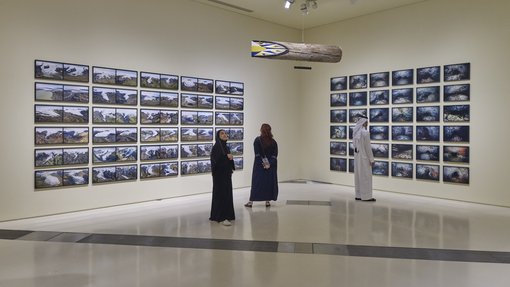
“Showcasing Imaginary Works: An Exhibition of Non-Existent Books”

**An Exploration of Imaginary Books: Unveiling the Lost, Unfinished, and Fictive Literary Worlds**
In the heart of Manhattan, nestled within the Grolier Club, a unique exhibition titled *Imaginary Books: Lost, Unfinished, and Fictive Works Found Only in Other Books* offers a deeply captivating homage to the boundless creativity of the literary imagination. Curated by bibliophile Reid Byers, this exhibit sits at the intersection of fact and fiction, breathing life into books that existed only in the minds of authors or as mere mentions in the pages of other works.
### A Tribute to Literary Absences
The exhibit casts a spotlight on fictive books, manuscripts lost to time, and novels never completed, reconstructing them into tangible, provocative objects. Among the featured items is Sylvia Plath’s *Double Exposure*, a work emblematic of both literary and personal loss. Believed to be destroyed by Plath’s husband, Ted Hughes, its haunting presence in this exhibit is a poignant “what if” — an exploration of an alternate reality where such a novel not only survives but redefines her legacy.
As with Plath’s piece, the exhibition thrives on reimagining narratives that dared to tease readers with fragments but never delivered the whole. Each “book” in the collection is handcrafted by a team of artists, printers, and calligraphers, bridging the gap between these imagined literary works and the physical form they never acquired in our world.
### The Intersection of Art and Literature
Imaginary books have long served as tools of worldbuilding in literature, existing only to expand the boundaries of their parent texts. Jorge Luis Borges’s *The Garden of Forking Paths,* referenced in his celebrated collection *Fictions*, exemplifies the literary labyrinth where fictive works open doors to entire universes of thought.
This exhibition takes the idea further by manifesting these books and turning them into physical artifacts. Byers referred to the project as a “post-structuralist conceptual art installation,” underscoring the multidisciplinary nature of the endeavor. Here, literature becomes more than text; it is transformed into visual and tactile experience, inviting audiences to engage with stories that exist on the margins of possibility.
### Imaginary Books as Cultural Mirror
The exhibition prompts viewers to reflect on the cultural significance of lost or fictional works. For instance, Lewis Carroll’s imagined *The Songs of the Jabberwock,* referenced in *Through the Looking Glass*, has been whimsically constructed for the exhibit. In doing so, it brings to life a piece of the Carrollian mythos that generations of readers have wondered about.
Perhaps one of the most evocative entries in the collection is the *Necronomicon*, the fictional grimoire often attributed to H.P. Lovecraft’s universe. While Lovecraft himself described the *Necronomicon* as purely fictional, its enduring influence has made it one of the most famous “books never written.” The exhibit’s version of the *Necronomicon* offers a playful yet reverential nod to the legends that have grown around this nonexistent work.
### A Collective Act of Creation
What makes this exhibit so special is the collaborative labor of artists and craftspeople tasked with translating abstract literary ideas into corporeal, artistic reality. Each book showcases intricate designs and thoughtful execution, turning hypothetical literary works into enticing new contributions to book arts.
The featured works range from fictional heavyweights like Sylvia Plath and Lewis Carroll to more obscure, yet equally enthralling, literary ghosts. Together, these pieces form a fascinating alternative canon that celebrates unbound creativity, sparking discussions about the nature of literature and its indelible role in shaping human imagination.
### Why Does Fictional Literature Matter?
At its core, *Imaginary Books* highlights one of literature’s deepest purposes: to challenge perception and evoke curiosity. These fictive constructs have stirred readers’ imaginations for centuries, influencing real-world ideas and creative thought. By materializing hypothetical texts, the exhibition deepens our understanding of how these “unwritten” works contribute to the global literary consciousness.
Such an endeavor also reminds us of the fragility of creative output. Lost manuscripts, such as Plath’s, and incomplete projects from countless authors show how much of the human record relies not only on creation but also on preservation. *Imaginary Books* presents the ultimate act of salvage, ensuring these absent works live on in an imaginative — if ultimately unreal — form.
### Visiting the Exhibition
Whether you’re a lover of literary oddities, a history buff, or an admirer of artistic craftsmanship, the exhibit promises a thought-provoking journey through the void left by these imagined and missing works. *Imaginary Books: Lost, Unfinished, and Fictive Works Found Only in Other Books* is open at the Grolier Club, Midtown Manhattan, and continues until February 15.
By bringing to life the books that should have, could have, or might have existed, the exhibition